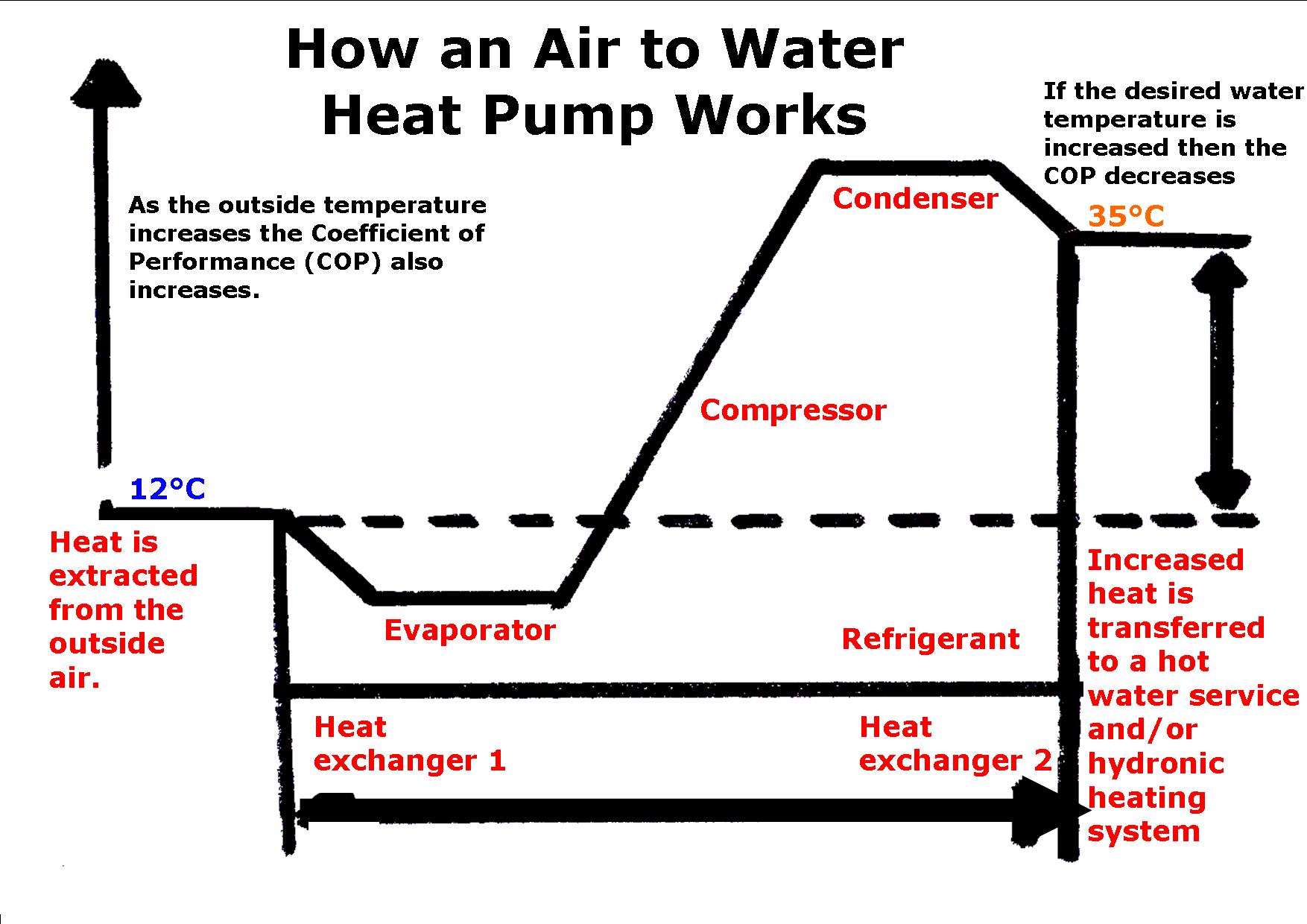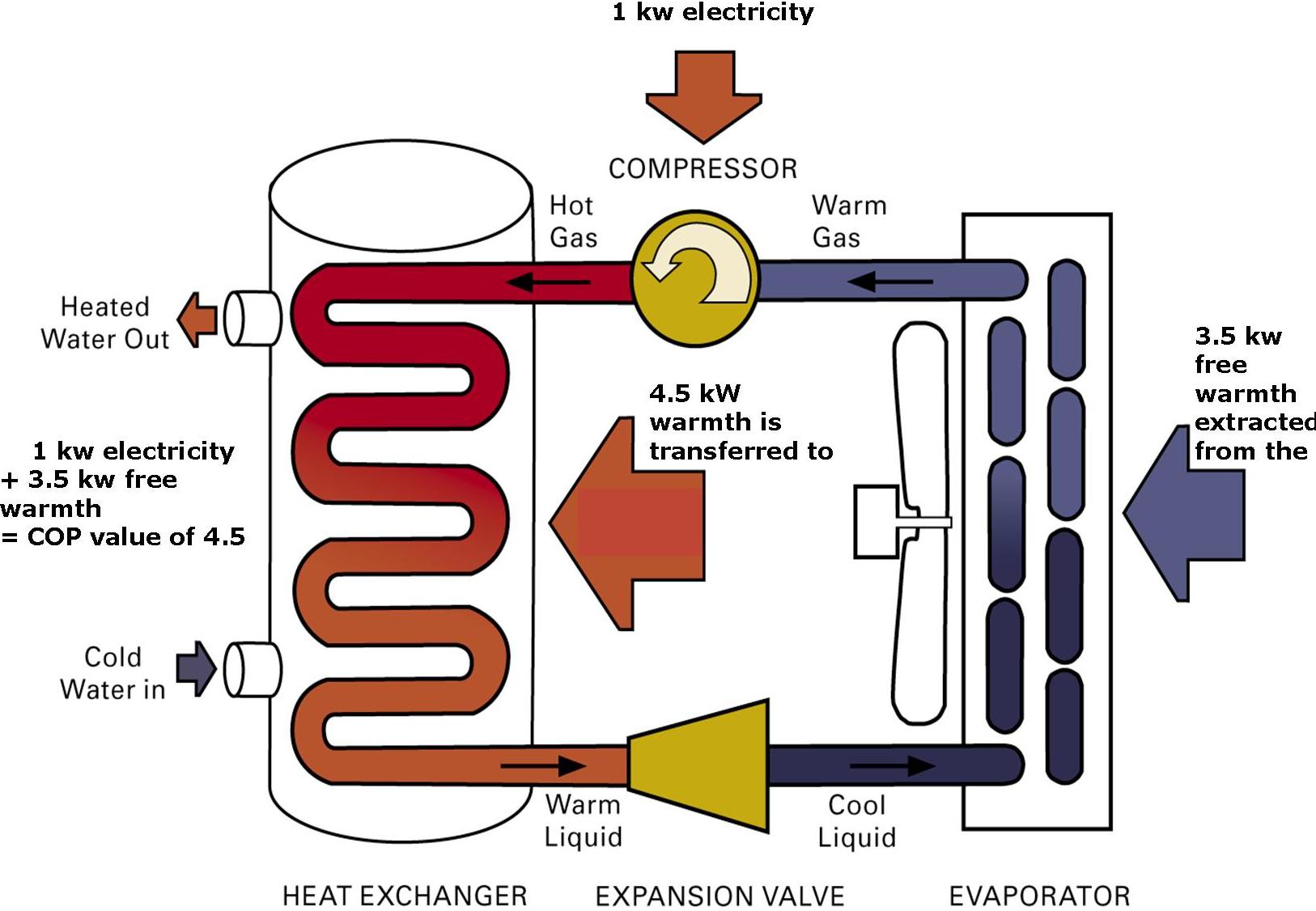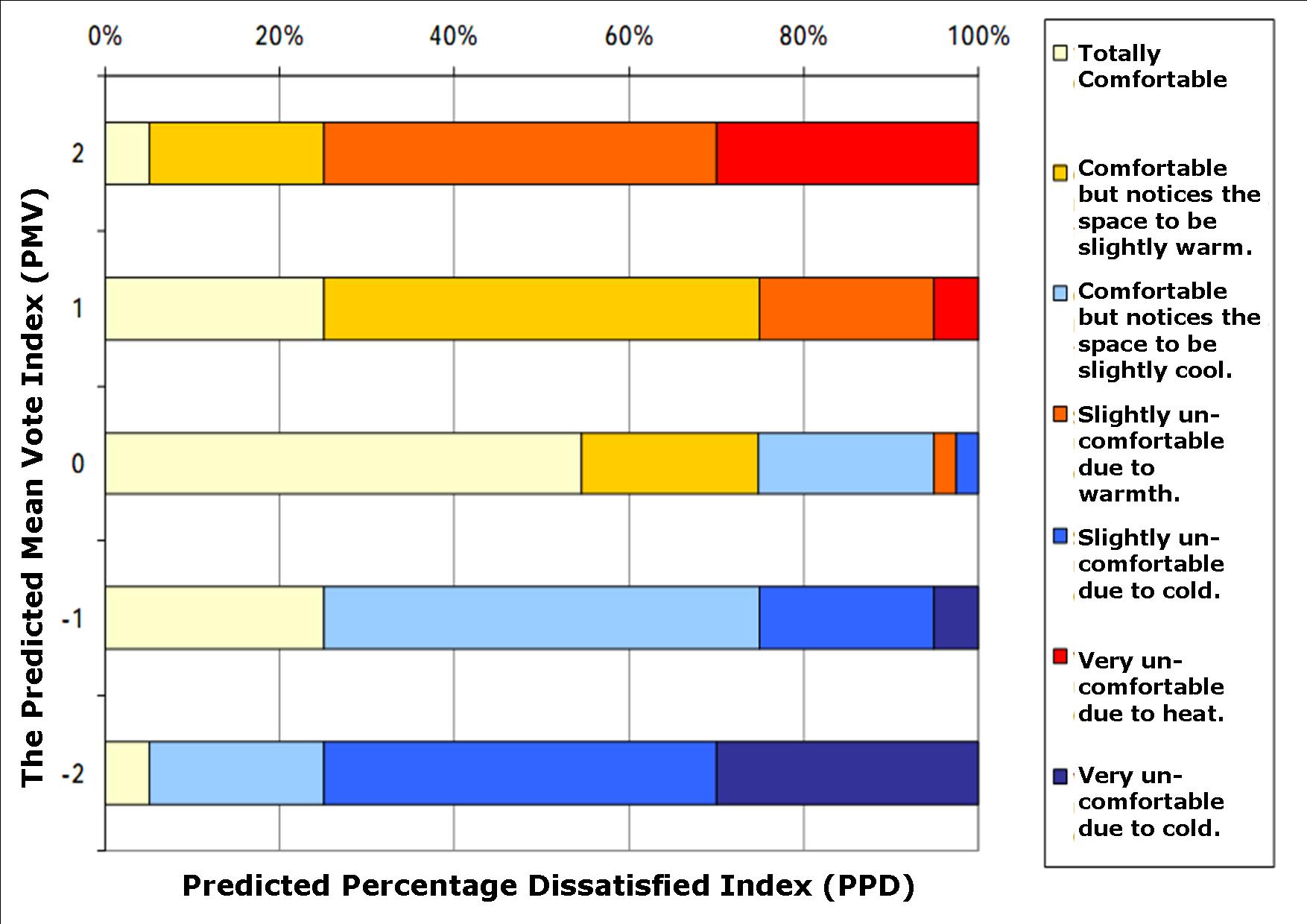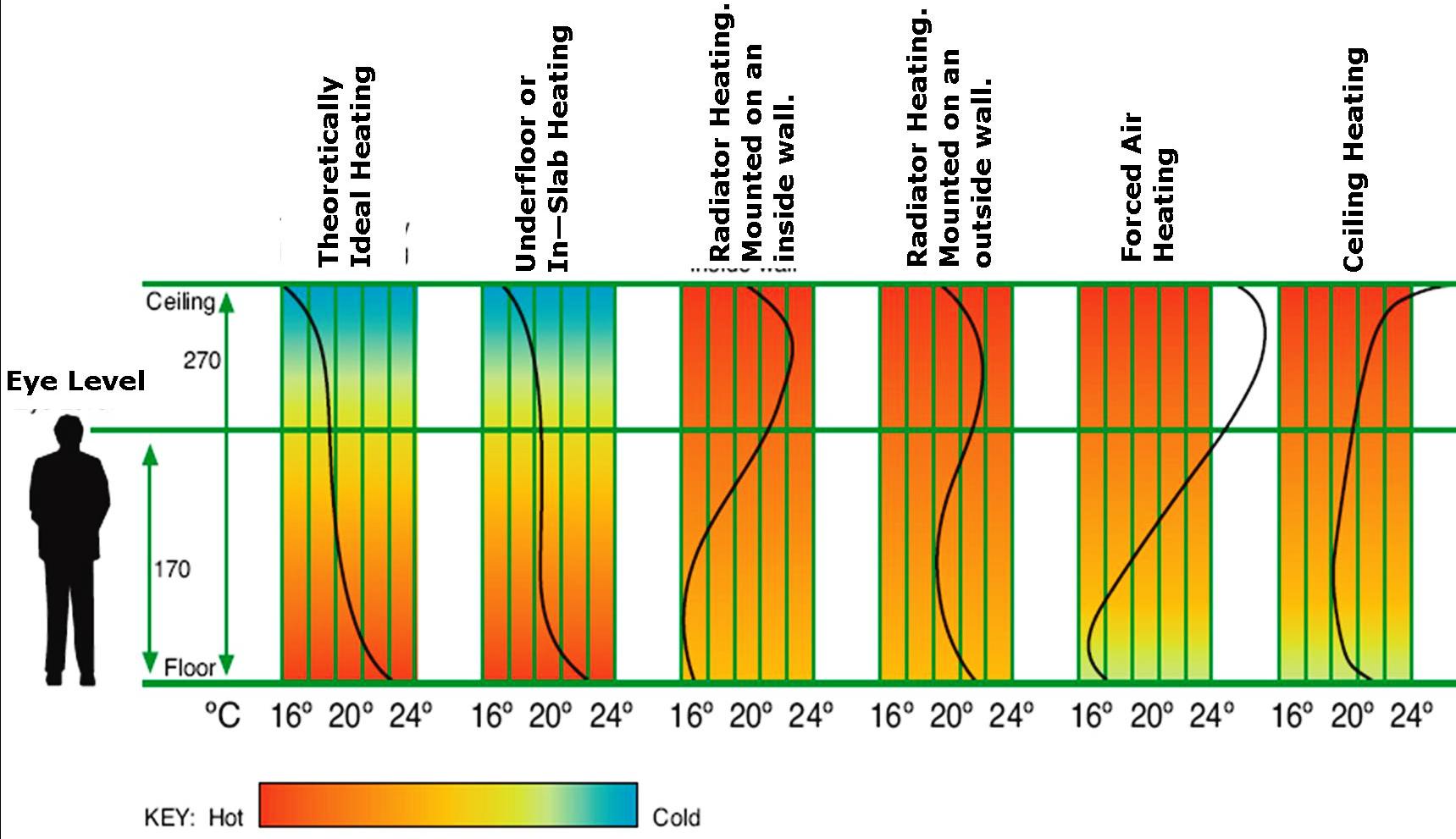source of energy.
 The
energy that warms the atmosphere and the earth's crust annually amounts
to 50 times more than our total energy consumption over the same period.
The
energy that warms the atmosphere and the earth's crust annually amounts
to 50 times more than our total energy consumption over the same period.
The temperature at the Earth's
core is estimated to be between 4000ºC and 7000ºC. 99% of the Earths
mass has a temperature of above 1000ºC and less than 0.1% of the Earth
is cooler than 100ºC!
It is remarkable that we can live between these two great energy sources, the Earth and the atmosphere, at such mild temperatures.
Obviously our climate is cooled by the circulation of ocean currents, winds and seasons, so much so that during the Winter we wish to warm our homes and buildings. This is because we like to live at a constant temperature all year round.
But as all this Renewable Energy being generated and carried off again we cannot help to think if there is an apparatus that can harness this energy?
The good news is there such an apparatus.
It is the heat pump and it is growing in popularity. In Switzerland there are more than 100 000 heat pumps in use and Austria more than 150 000 to name but two countries.
What a heat pump does is absorb warmth from a source being the ground, the air or water, carry it via a medium (refrigerant) and dump it somewhere else (inside if heating or outside if cooling). But what makes this appliance so impressive is the ability to also increase the extracted temperature when heating, or decrease the temperature when cooling free of charge.
Heat Pumps differ amongst themselves in where they extract the warmth from and into what do they dump this increased heat.
They can be classed into the following, but they all work on the same principle:
- ground to water (otherwise known as geothermal heat pumps)
- ground to air
- water to water
- water to air
- air to water (for hydronic heating and hot water purposes)
- air to air (more commonly known air conditioning)
If the heat pump is an "air to
water" then this means that the heat pump extracts the warmth held in
the air and transports it to water which could be a hot water service
or a hydronic heating service, or both.
The effectiveness of a heat pump to produce heat is presented as a Coefficient of Performance or COP. This gives the ratio between the amount of electricity consumed and the amount of energy produced.
Below is a graph taken from a
Daikin Altherma air to water heat pump. It must be remembered the each
heat pump has its own graph.
If the outside temperature is 12ºC and the desired water temperature is 35ºC (ideal for underfloor heating) then the COP value would be close to 5.5.
In other words if the COP value of the heat pump is 5.5 then for every 1kWh used 4.5kWh of heat is produced. That means you gain 4.5kWh for free!
In other words the heat pumps gains 450% efficiency at 12ºC with a water temperature output of 35ºC.
During the winter if the
temperature drops then the electrical boost must work harder and the
COP value will drop. The same applies when the desired water or indoor
temperature is increased.
A minimum amount of peak tariff electricity is always needed to drive the pump and electrical componants and when climate conditions are not ideal to boost the hot water temperature.
As the outside temperature rises then the heat pump becomes increasingly economical to run, but during the summer the demand for hot water and heating drops significantly. If the heat pump has a reverse cycle mode then it can be also used to cool the home.

When measuring the cooling capacity of a heat pump then the Energy Efficiency Rating or EER is used. If the EER is 3.5 then the air conditioner would consume 1 kWh would remove heat from a building's air at a rate of 3.5kWh. That means you gain 2.5kWh for free.
Heat pumps that heat are more efficient than heat pumps that cool or the heating mode is cheaper to run than the cooling mode.
Hydronic systems can be used both for heating and cooling when combined with a reverse cycle air to water heat pump or reverse cycle air conditioners. If radiators or convectors
are considered then they should have a fan function because there is no
convection to distribute the cool air. Natural convection only works
with warm air causing the air to rise and circulate. Cool air sinks and
must be disturbed by fans before it will cool the whole area.
Therefore just as solar
collectors are dependent on the average number of sunshine hours so a
heat pump is dependent on the average ambient temperature of the air.
This would make a heat pump particularly interesting for those living
in shaded areas, or for those who are not connected to mains gas.
When the running conditions are ideal the savings are very high.
For all service or repairs to existing hydronic heating, gas or hot water units and installations
as well as any general plumbing jobs:
maintenance@adelaidehydronicheating.com.au
To learn more about the installation of new gas, hot water or hydronic heating units and systems :queries@adelaidehydronicheating.com.au
Please note this is a South Australian based business.




